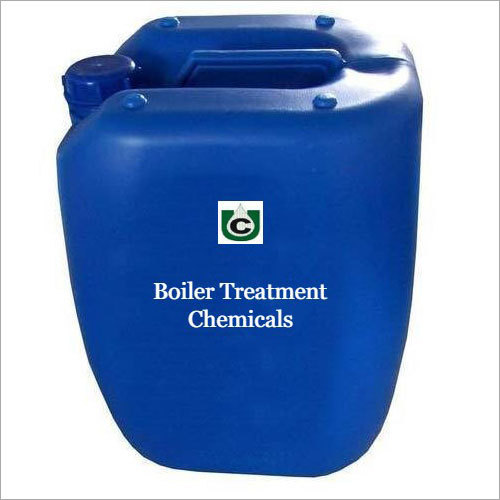Cooling water treatment is a critical process in industrial settings where the efficient operation of cooling systems is essential for maintaining equipment integrity and maximizing productivity. The primary purpose of cooling water treatment is to prevent corrosion, scale deposition, and microbiological growth within the cooling water system. Filming amines , a specific type of chemical additive, play a crucial role in achieving these objectives.
Corrosion is a significant concern in cooling water systems due to the presence of dissolved oxygen, which can react with metal surfaces, leading to the formation of corrosion products such as rust. Corrosion not only compromises the structural integrity of equipment but also results in reduced heat transfer efficiency and increased energy consumption. Filming amines act as corrosion inhibitors by forming a protective layer on metal surfaces, effectively blocking the interaction between the metal and corrosive agents.
Scale deposition is another common problem in cooling water systems, particularly in areas with hard water containing high concentrations of calcium and magnesium ions. When water is heated or evaporates, these ions can precipitate out of solution and form scale deposits on heat transfer surfaces, reducing heat transfer efficiency and obstructing flow pathways. Filming amines help to inhibit scale formation by dispersing and preventing the agglomeration of scale-forming ions, thus maintaining system efficiency and prolonging equipment life.
Microbiological growth, including the proliferation of bacteria, algae, and fungi, can also occur in cooling water systems, leading to fouling, biofilm formation, and potential health hazards. These microorganisms can create slime layers on heat transfer surfaces, restrict water flow, and contribute to corrosion by producing corrosive byproducts. Boiler treatment chemicals suppliers possess biocidal properties, effectively controlling microbial growth and preventing biofouling in cooling water systems.
In addition to their role in corrosion inhibition, scale prevention, and microbiological control, filming amines offer several advantages over traditional water treatment chemicals. Unlike traditional inhibitors that rely on a sacrificial mechanism or the formation of a passive oxide layer, filming amines form a persistent and self-repairing protective film on metal surfaces, providing long-lasting corrosion protection. Furthermore, filming amines are effective over a wide range of pH and temperature conditions, making them suitable for diverse industrial applications.
The application of filming amines in cooling water treatment requires careful consideration of various factors, including water chemistry, system design, operating conditions, and environmental regulations. Proper dosing, monitoring, and maintenance are essential to ensure optimal performance and maximize the benefits of filming amine treatment. Routine testing of water quality parameters, such as pH, conductivity, corrosion rates, and microbiological counts, is necessary to assess treatment efficacy and identify any potential issues.
In industrial settings where cooling water systems are prevalent, the importance of effective water treatment cannot be overstated. These systems are integral to the operation of various processes, including power generation, manufacturing, chemical processing, and HVAC (Heating, Ventilation, and Air Conditioning). Cooling water treatment, with the incorporation of filming amines, is a cornerstone of maintaining the integrity and efficiency of these systems.
One of the critical aspects of cooling water treatment is the selection of the appropriate chemical additives, such as filming amines, based on the specific requirements and challenges of the system. Filming amines are particularly well-suited for combating corrosion, scale deposition, and microbial contamination in cooling water systems. Their unique properties make them a preferred choice for many industrial applications.
The mechanism of action of filming amines involves the formation of a thin, protective layer on metal surfaces, known as a “film.” This film acts as a barrier, shielding the metal from corrosive agents present in the water. Unlike traditional corrosion inhibitors, which may require frequent replenishment or maintenance, filming amines create a durable and self-repairing protective coating, ensuring long-lasting corrosion protection.
In addition to corrosion inhibition, filming amines also exhibit excellent scale inhibition properties. By interfering with the nucleation and crystal growth of scale-forming minerals, such as calcium carbonate and magnesium silicate, filming amines prevent the formation of scale deposits on heat transfer surfaces. This helps to maintain optimal heat transfer efficiency, minimize energy consumption, and reduce the risk of equipment failure associated with scale buildup.
Moreover, steam boiler cleaning chemicals play a crucial role in controlling microbial growth within cooling water systems. By disrupting the metabolic processes of microorganisms or damaging their cell membranes, filming amines effectively inhibit the proliferation of bacteria, algae, and fungi. This biocidal action helps to prevent biofouling, slime formation, and the development of harmful microorganisms that can compromise system performance and pose health risks.
By effectively controlling corrosion, scale formation, and microbiological growth, filming amines help to mitigate operational risks, reduce maintenance costs, and prolong equipment life. With proper implementation and monitoring, filming amine treatment can provide significant economic and environmental benefits to industries reliant on cooling water systems.
















